Fountains Abbey – The Beauty of Ruins
This is my tenth post on a recently completed trip to Great Britain with the Canadian military tour specialists at Liberation Tours. In the last post we were at liberty to tour the ancient city of York by walking the walls, rambling through The Shambles and of course, visiting the famous York Minster Abbey. This morning we are headed further north towards the city of Newcastle with a couple of important stops along the way – the ruins of Fountains Abbey and Richard III’s castle at Middleham. But first, out tour leader Phil Craig gives us a rundown on the Battle of Stamford Bridge which took place at an undetermined site not far from York. It’s the lesser known of the battles fought by King Harold in the year 1066. At Stamford Bridge Harold was victorious, defeating the invading force of the Norwegians under Harold Hardrada with whom his treacherous brother Tostig had joined forces. The only problem was that he then had to rush southwards to the English Channel and confront another invasion force led by William of Normandy. We all know how that turned out. Having been at the Battle of Hastings site on the first day of the tour I could really appreciate just how far Harold had to march his forces to get there and how tired they must have been.
History of Fountains Abbey
Fountains Abbey is a National Trust property not far from the town of Ripon just east of the Yorkshire Dales. It is part of a UNESCO World Heritage Site, along with the Studley Royal Water Gardens which is described thus by UNESCO:
In the 18th century a designed landscape of exceptional beauty was created around the ruins of the Cistercian Fountains Abbey, in Yorkshire. The spectacular ruins of the 12th century abbey and water mill, the Jacobean mansion of Fountains Hall, the Victorian masterpiece St Mary’s Church and one of the most magnificent Georgian water gardens ever created, make this a landscape of outstanding merit.
In other words, it was the incorporation of the ruined abbey into a man made landscape in the 1700’s that created something that was greater than the sum of its parts. As a lover of gardens and well preserved ruins (not an oxymoron), I expected this to be one of the highlights of the entire trip. Turns out it was, but also the scene of one my more bone-headed maneuvers in some time. I’ll explain later.
Fountains Abbey was founded in 1132 by a dissident group of Benedictine monks from York who opted to associate themselves instead with the fast growing Cistercian movement of which St. Bernard of Clairvaux was the prime mover. Also known as the white monks, the Cistercians believed in strict monasticism and hard work. They became renowned for their expertise in agriculture, which in the case of Yorkshire included successful sheep farming and all manner of woollen products. With various ups and downs, the abbey survived for over 400 years before being dissolved by Henry VIII in 1539. It then became the private property of several prominent English families who seemed to have used it as source of stone and lead for their undertakings, including nearby Fountains Hall that stands today.
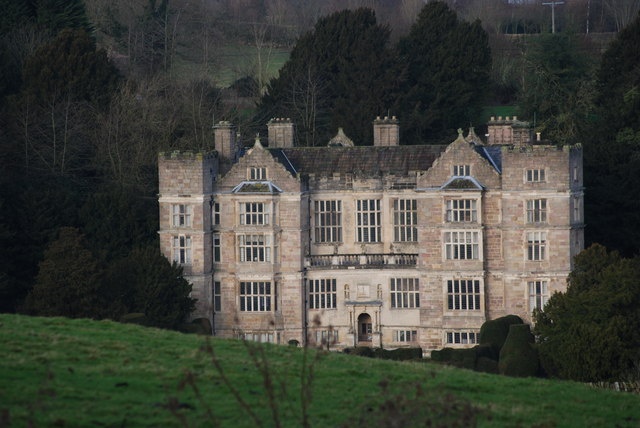
By the 1700’s the entire site was one gigantic, but majestic ruin, so much so that William Aislabie, a prominent Tory politician, decided to incorporate it into the huge gardens that his father began in 1718.
Visiting Today
The entrance to Fountains Abbey is down a narrow road hardly wide enough for our bus and oncoming cars to pass. After getting our tickets we head en masse down toward the abbey ruins and gather at the original Porter’s House where there is a model of the abbey. Originally the entire property was enclosed by walls and visitors had to gain clearance to enter from the head porter.
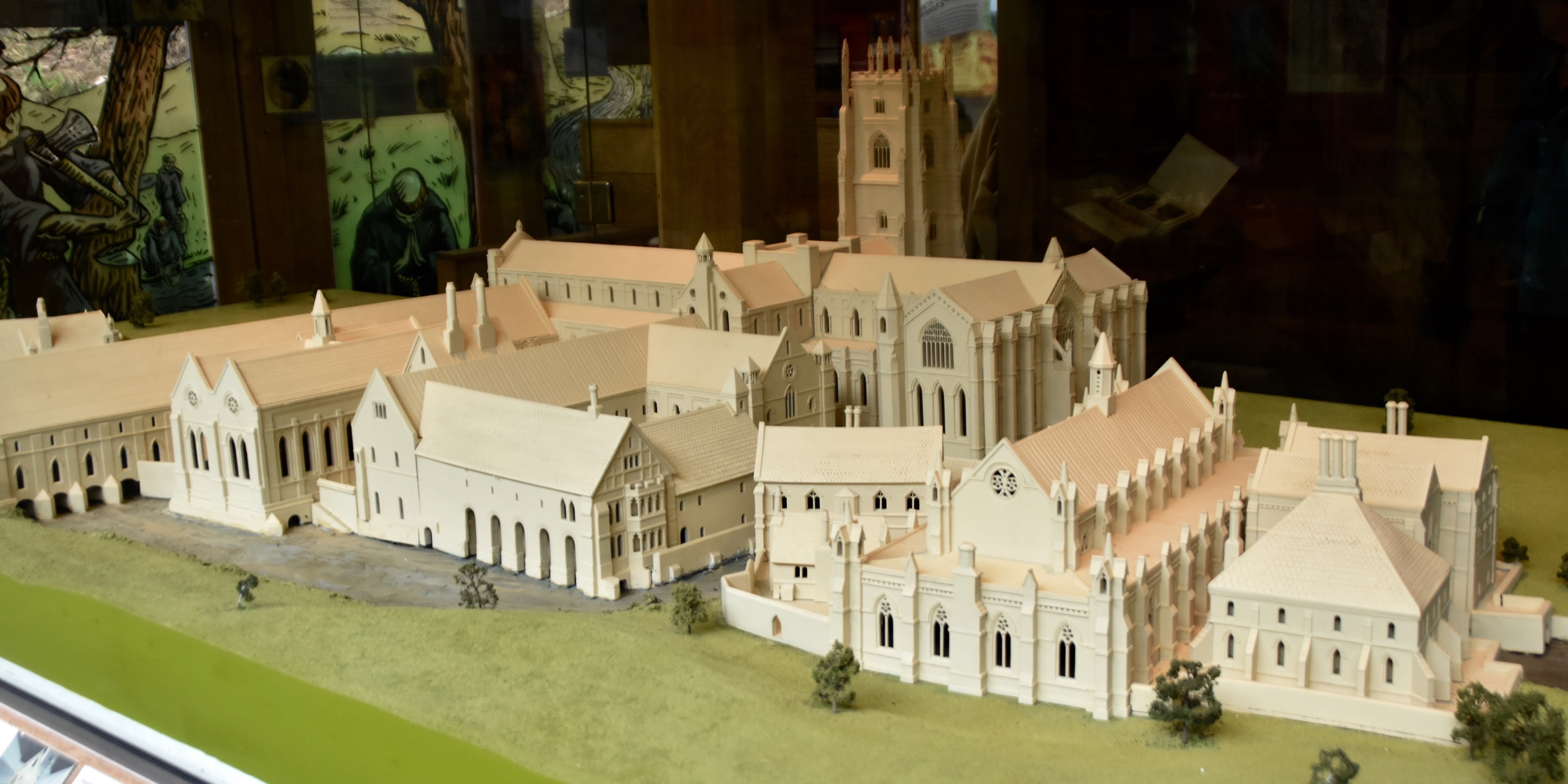
Usually one associates the word abbey with a single building like Westminster Abbey, but the reality was that abbeys contained many buildings of which the church was the most prominent. Most of the buildings that once made up Fountains Abbey are long gone, but enough remain to give the area the austere beauty that Aislabie recognized as befitting for a monumental garden landscape.
Phil herds us toward the ruins of the abbey church for a group photo and along the way I notice that there is still at least one Cistercian monk at Fountains Abbey, walking the grounds like a white ghost from the Middle Ages.
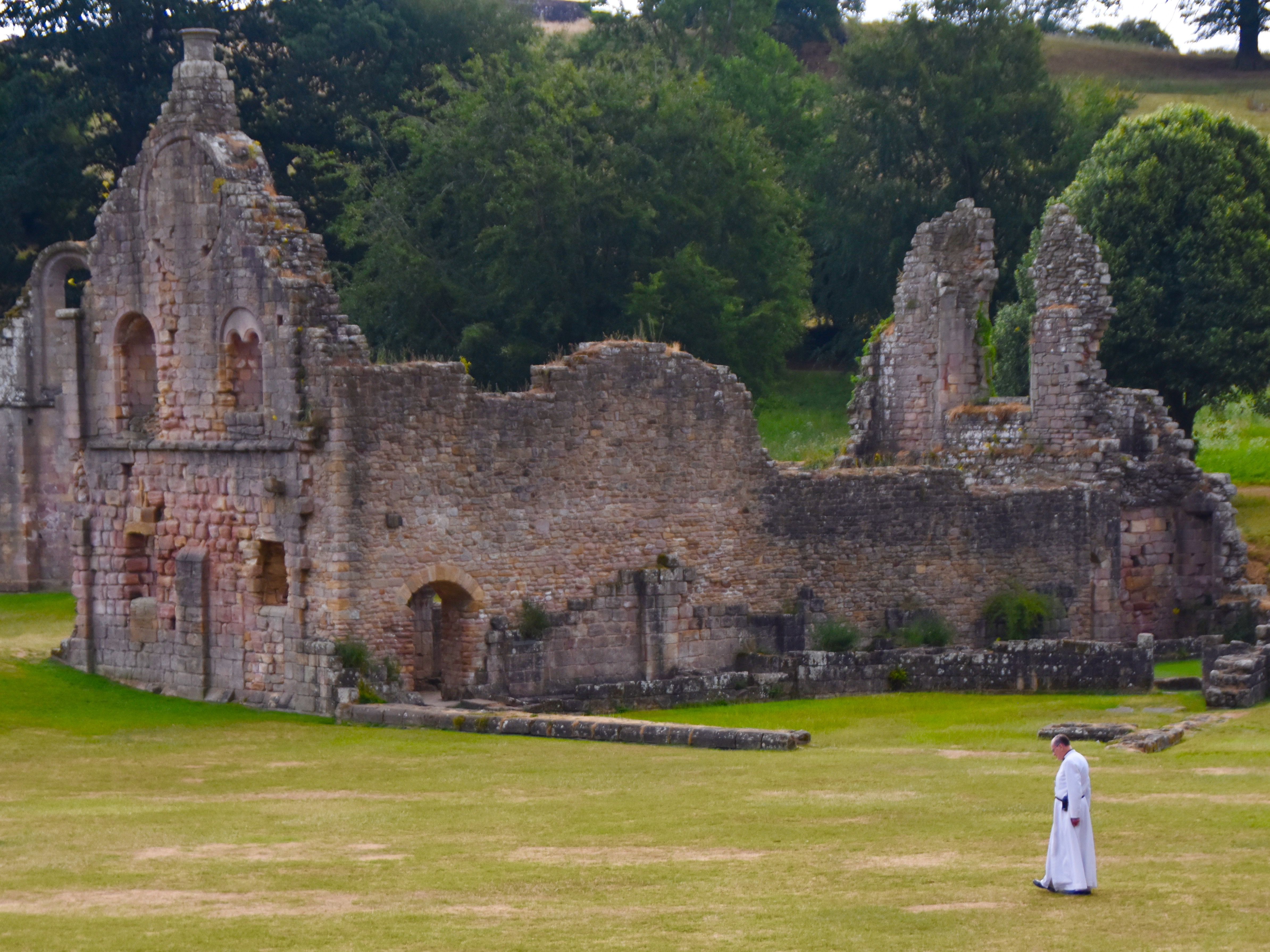
We gather in front of the ruined church for a group photo and then have an hour to explore the grounds before departing for Middleham, which seems like a lot of time, but in actuality is not. That’s tour leader Phil Craig on the far right.

The great romantic poet William Wordsworth recognized the beauty of ruins in his majestic poem Lines Composed a Few Miles Above Tintern Abbey and could as easily have been writing about Fountains Abbey as Tintern. There is something about the skeletal remains of Fountains Abbey that, for me, was at least as impressive as if the entire structure were still in place.
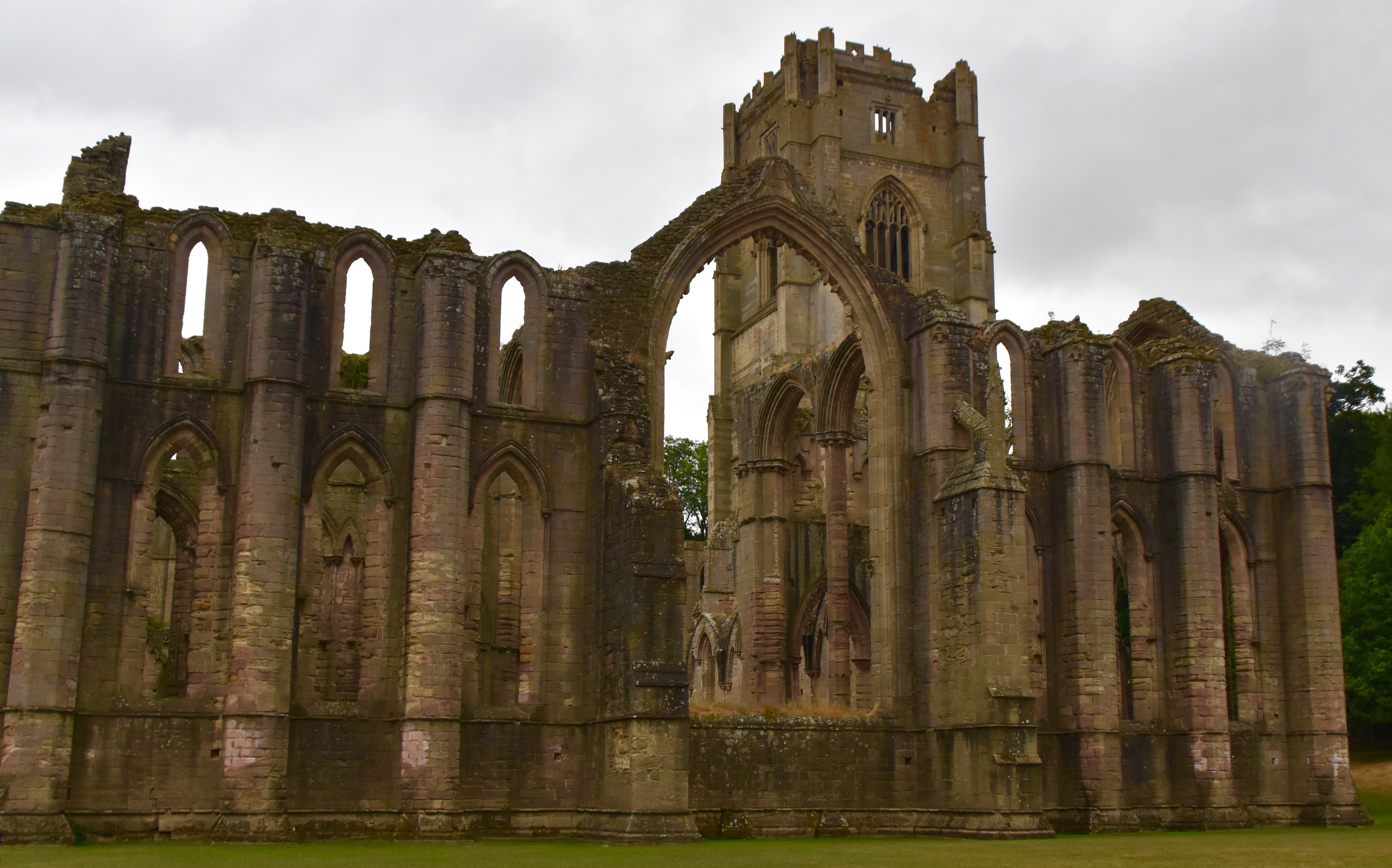
Without a roof, one can appreciate the wonderful symmetry of gothic architecture as in this photo looking down the nave to the entrance. It’s actually taken from the same spot as the photo on the Liberations Tour website.
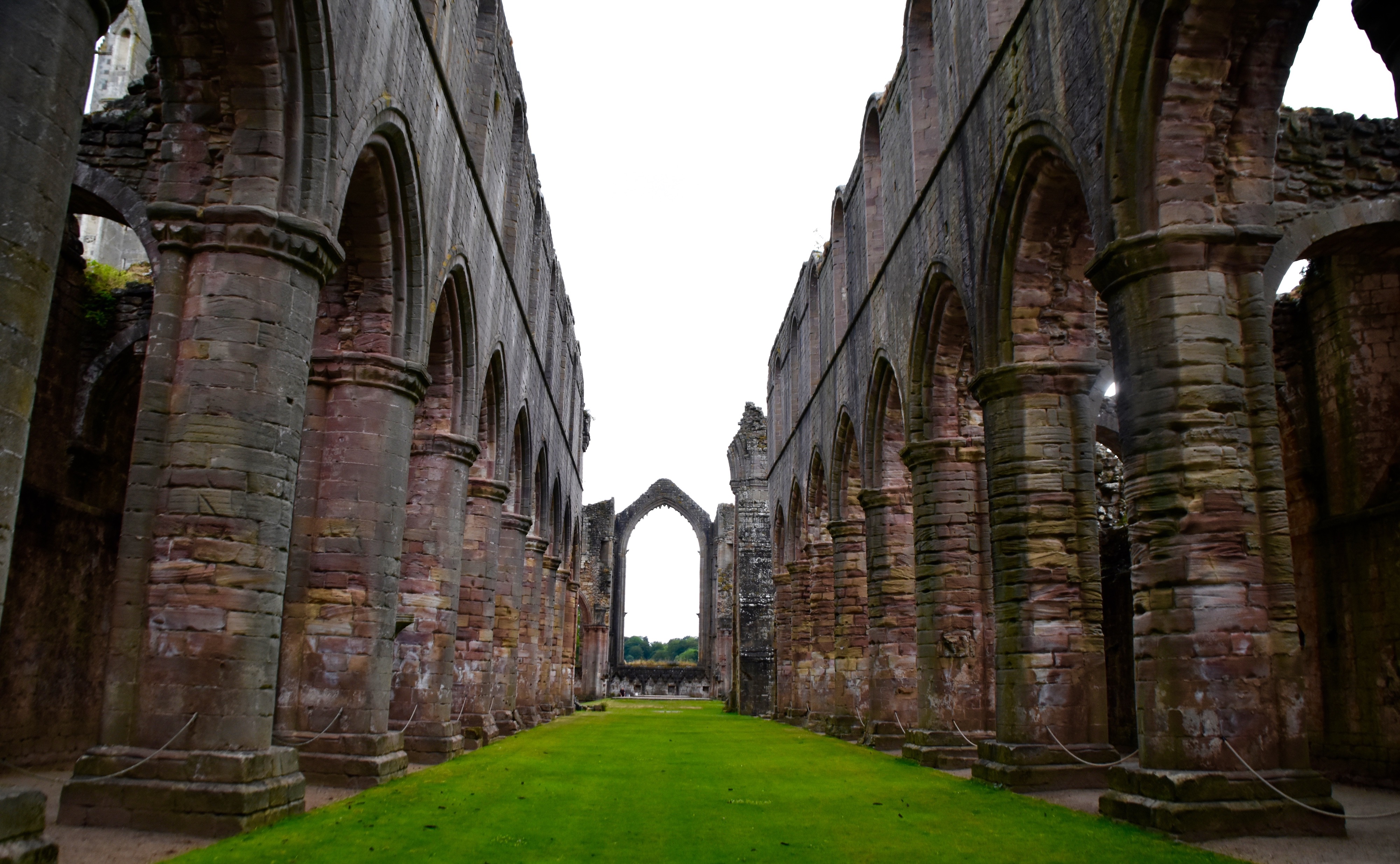
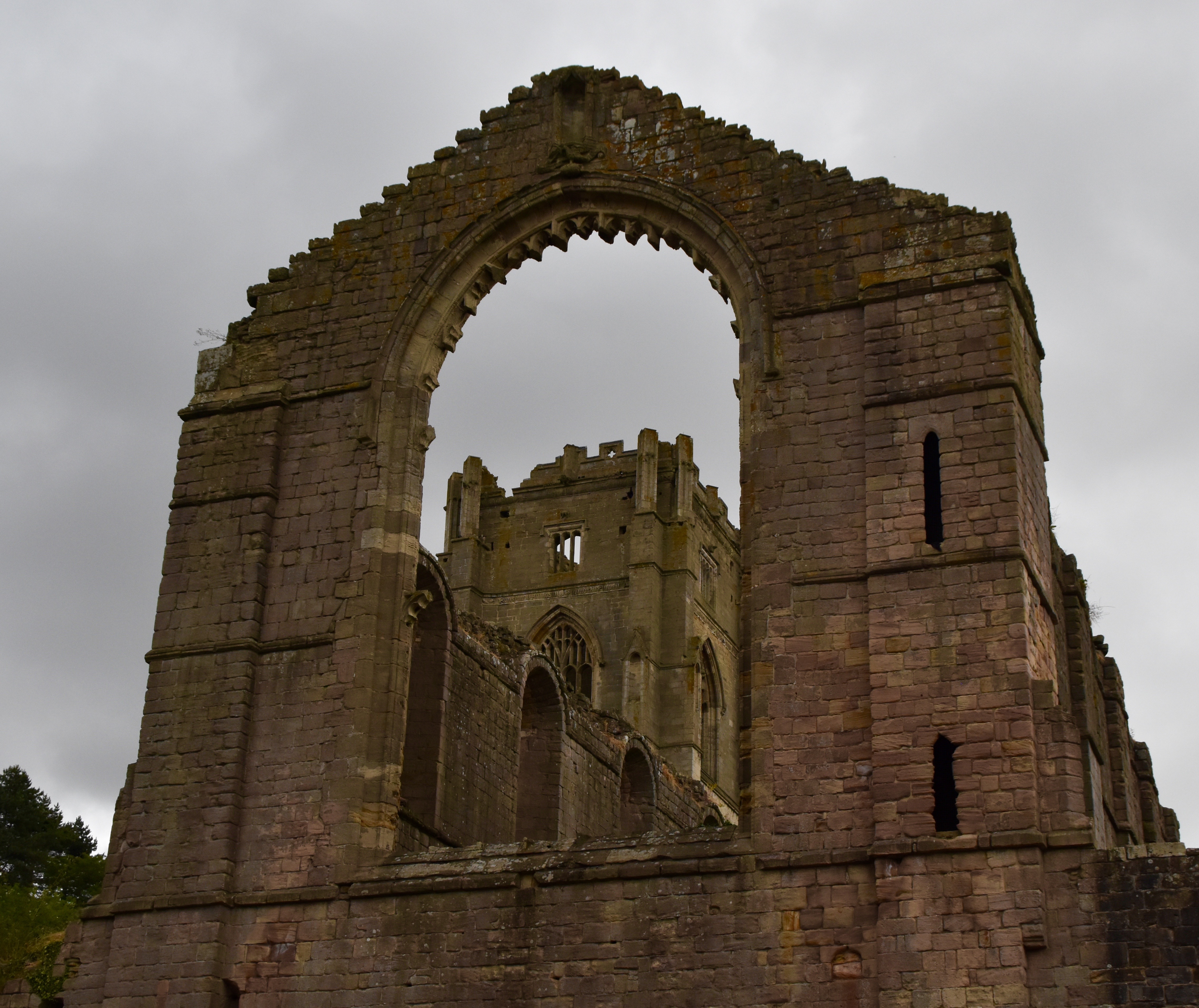
I could easily have spent the allotted hour just taking photos of Fountains Abbey from all different angles, but I really wanted to see the Studley Water Garden which presented a bit of a conundrum. Here is a map of the estate.
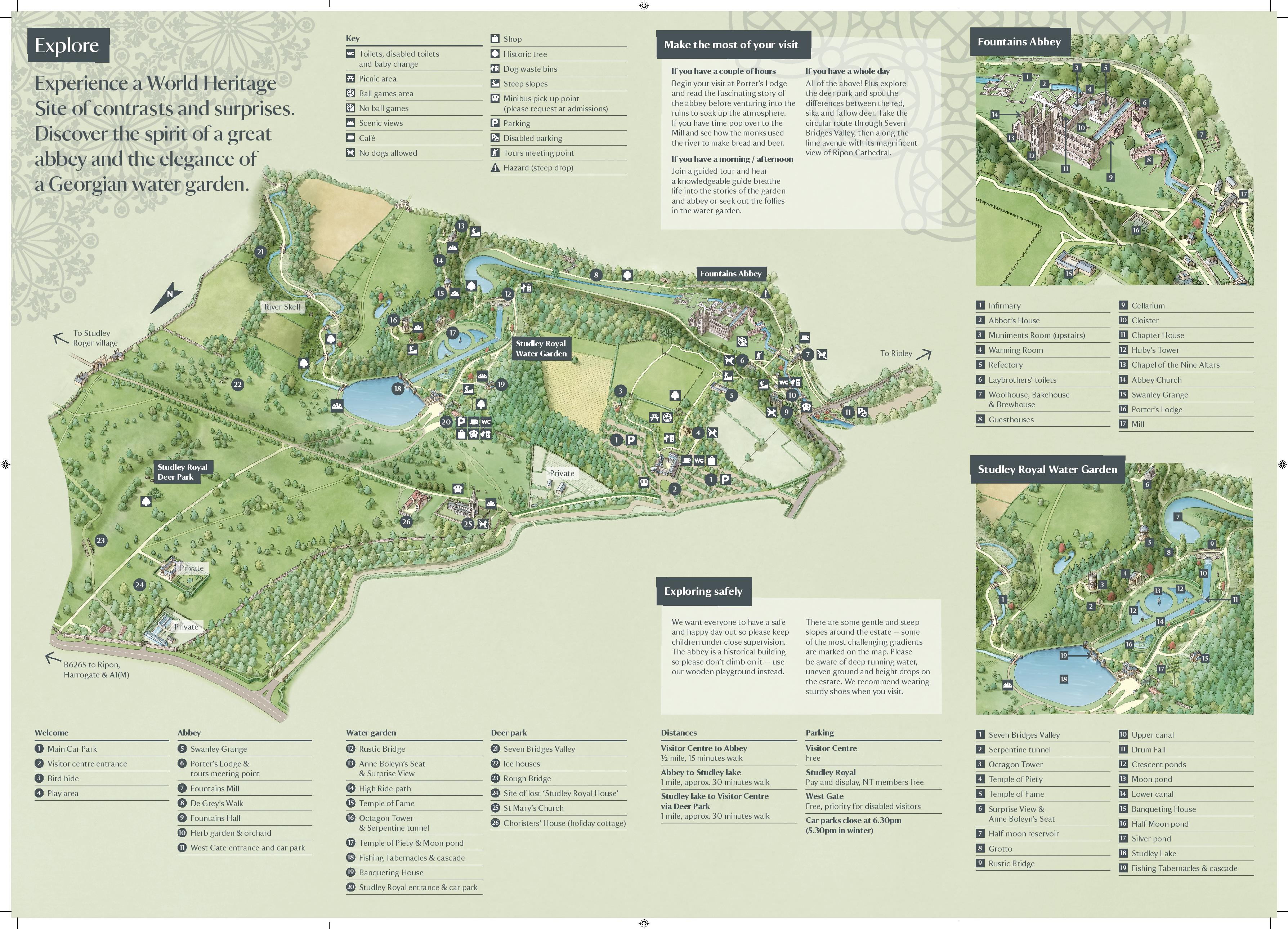
The reality is that the ruins of Fountains Abbey occupy but a small portion of the entire grounds and a visit to the gardens would entail a walk of a couple of miles with only about forty minutes left. It would be close, but what the hell, nothing ventured, nothing gained and I headed off with Alison, my sister Anne and Rob and Janet Purdy following. Was it worth it? I’ll let you be the judge from just these two photos.
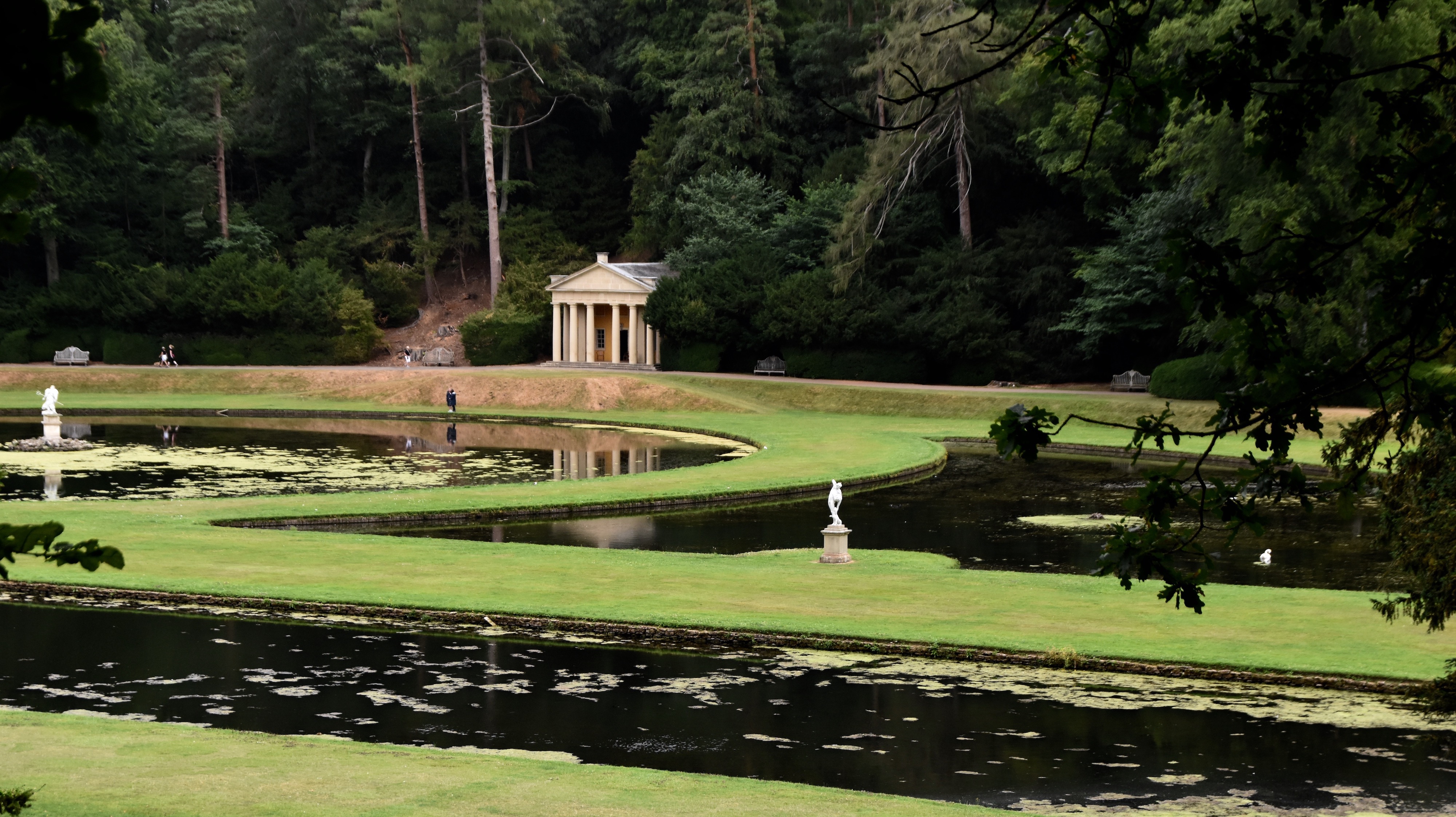
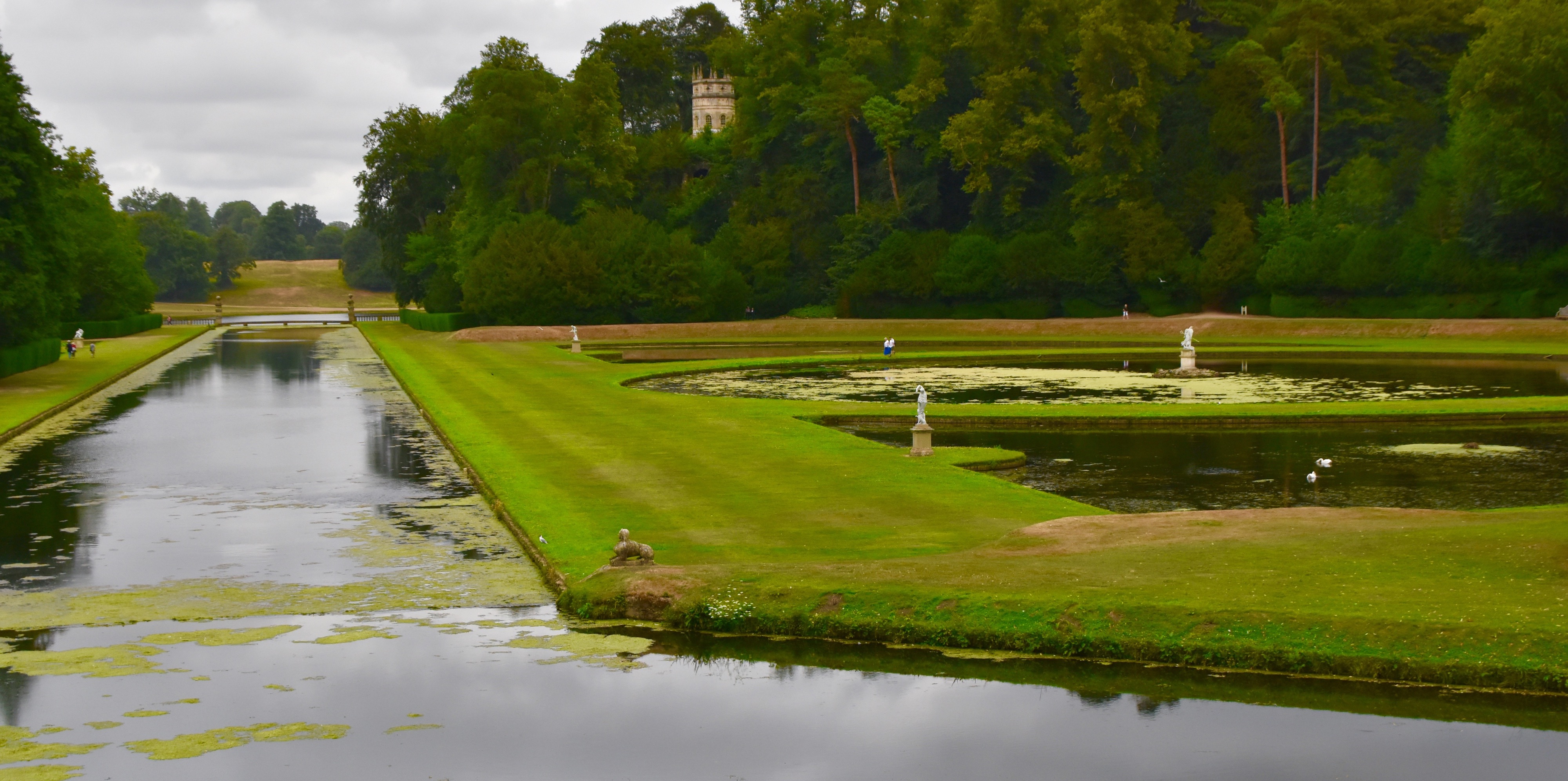
The answer is an obvious yes. At this point it was just over a mile back to the entrance if we retraced our steps or about a mile and half if we made a circular route. Not being one to turn back if there is a way forward, I charged ahead and like the Pied Piper, my friends and relatives followed, not realizing I was the blind leading the blind. OK, enough with the cliches; the bottom line is I missed a turn, we wandered into the Yorkshire countryside, got hopelessly lost, had to flag down a car and ask for directions, were offered a drive back and held up the bus by almost half an hour.
I was properly mortified and wore, without protest, the Dunce Crown for the rest of the day.
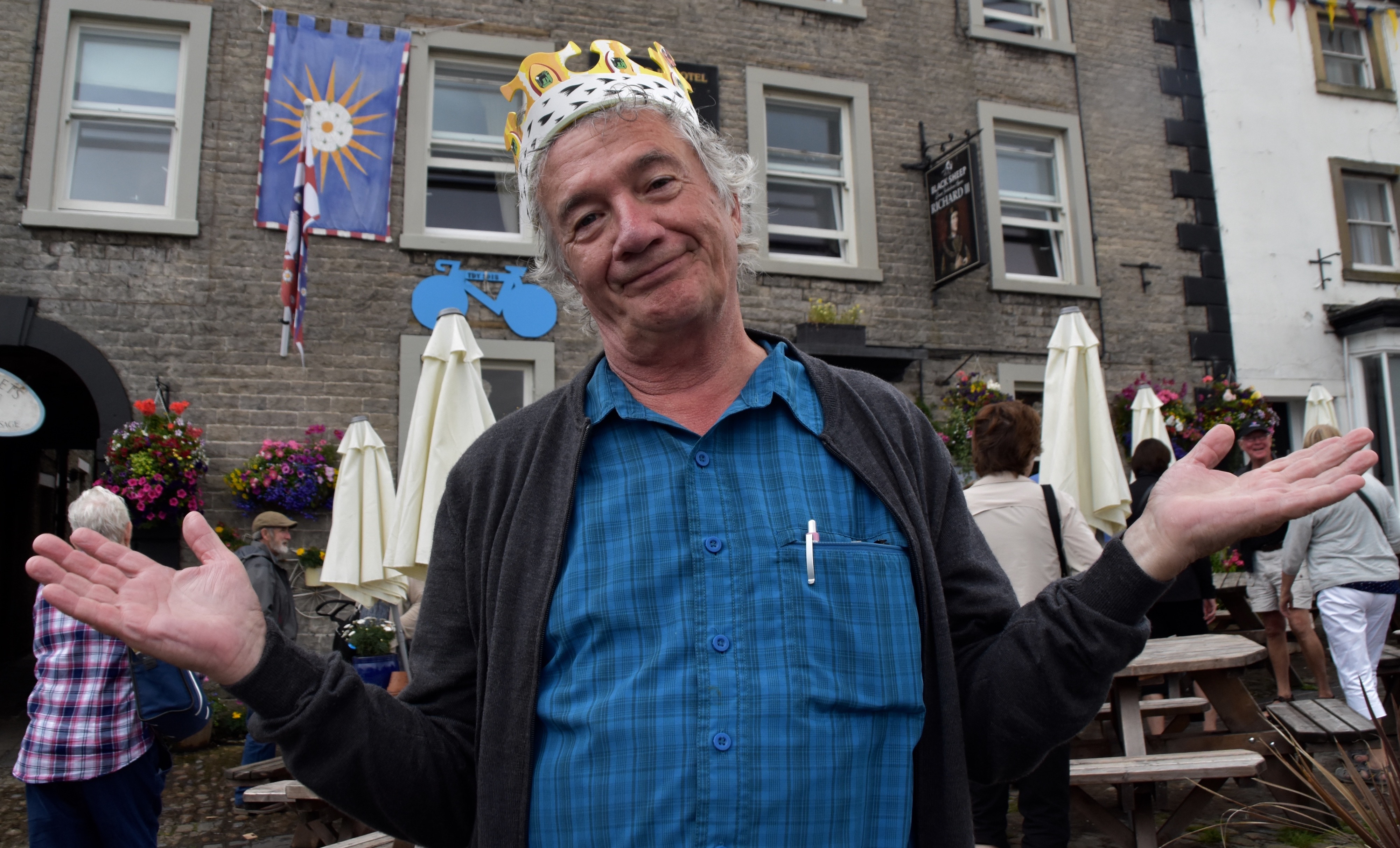
So, if you go on the next Liberation Tours Medieval Britain trip, just be satisfied with seeing the ruins of Fountains Abbey or be prepared to be crowned a dunce.
Next, Phil restores Richard III’s reputation, or does he?

